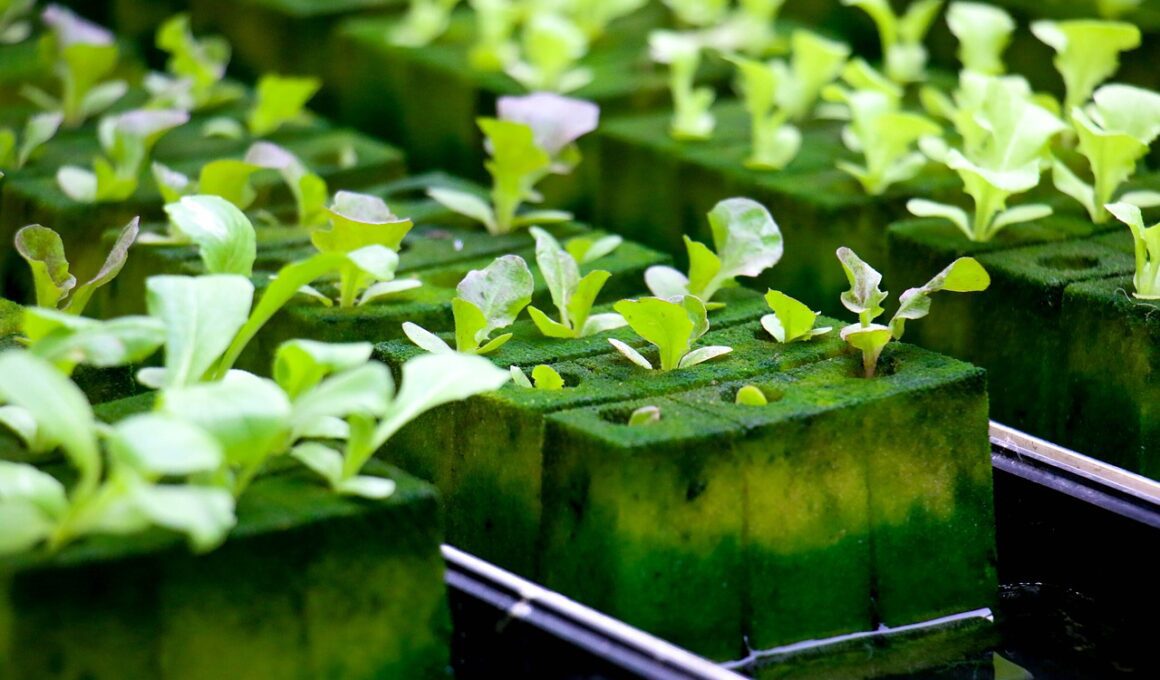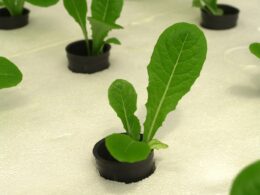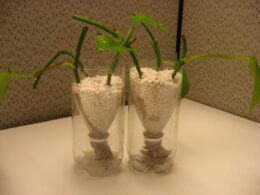Are you new to hydroponic gardening and wondering how big your reservoir should be? The reservoir is a critical component of your hydroponic system, as it stores and distributes the nutrient-rich water that feeds your plants. Choosing the right size for your reservoir can mean the difference between a thriving garden and a failed one.
In this article, we will guide you through the process of determining the ideal size for your hydroponic reservoir, so you can grow healthy and abundant crops with ease.
Before we dive into the details, let’s first understand the importance of the reservoir in your hydroponic system. Unlike traditional soil gardening, hydroponic plants rely on a precise balance of water, nutrients, and oxygen for optimal growth. The reservoir serves as a central hub for these elements, providing a constant supply of water and nutrients to your plants’ roots.
Without a properly sized reservoir, your plants may not receive enough water or nutrients, leading to stunted growth or even death. By following our tips, you can ensure that your hydroponic garden has the right amount of water and nutrients to thrive.
Understand the Role of the Hydroponic Reservoir
Discover the crucial role of the container that holds your hydroponic plants’ lifeblood. The hydroponic system benefits from having a reservoir that holds the nutrient solution, acting as the lifeblood of the plants. The reservoir is the central component of a hydroponic setup, and it plays a vital role in the growth of the plants.
The reservoir placement is important to ensure that the plants receive the right amount of nutrient solution. The reservoir should be placed at a level below the plants to allow for gravity feeding. This placement ensures that the plants receive the necessary nutrients for their growth. Additionally, the reservoir should be placed in an area that is easy to access for maintenance and monitoring.
The size of the reservoir is an important consideration. The size of the reservoir should be based on the number and size of the plants and the type of hydroponic system being used. The reservoir should be large enough to provide enough nutrient solution for the plants to use, but not so large that it becomes difficult to maintain and monitor. A good rule of thumb is to have a reservoir that can hold enough nutrient solution for one week’s worth of plant growth.
With a properly sized reservoir and careful attention to placement, your hydroponic plants will thrive and provide you with a bountiful harvest.
Consider the Size of Your Hydroponic System
When planning your hydroponic system, it’s important to consider the size of your setup to determine the appropriate size of the water container. The size of your hydroponic reservoir is directly influenced by the scale of your hydroponic system.
A small hydroponic garden in the corner of a room may only require a five-gallon container, while a larger-scale hydroponic garden may require a hundred-gallon container. To determine the appropriate size of your hydroponic reservoir, consider your hydroponic system layout.
If you have a vertical hydroponic setup, you may need a larger water container as the plants will require more water and nutrients. Reservoir placement considerations are also important.
The hydroponic reservoir should be placed in a location that is convenient for filling and draining. It’s important to ensure that the reservoir is placed at a level higher than the plant containers to allow for easy flow of water and nutrients.
In summary, the size of your hydroponic reservoir should be determined by the scale of your hydroponic system, hydroponic system layout, and reservoir placement considerations. Take the time to plan your hydroponic system carefully to ensure that you have the appropriate size of the water container. This will help to ensure that your hydroponic garden is healthy and thriving.
Should I Increase the Size of my Hydroponic Reservoir If my Plants Grow Too Big?
If your hydroponic plants are outgrowing their current reservoir, increasing its size can be a helpful solution. A larger reservoir allows for a greater volume of nutrient solution, ensuring your plants have sufficient water and nutrients to support their growth. Adequate hydroponic plant size management tips include regular monitoring, adjusting nutrient levels, and considering the size requirements of different plant species. This helps promote healthy growth and prevents overcrowding within the system.
Calculate the Water Requirements
You’ll want to calculate the water requirements for your setup to ensure your plants receive the necessary nutrients and hydration for optimal growth. Estimating the capacity of your hydroponic reservoir is crucial in determining the size of your setup.
You’ll need to consider the number of plants you’re growing, the type of plants, and their growth stages to figure out how much water they’ll need. The water quality also plays a significant role in the size of your hydroponic reservoir.
The pH level of your water should be between 5.5 and 6.5, and the temperature should be around 68-72°F. You’ll need to ensure that the water has enough dissolved oxygen to keep your plants healthy.
If the water is stagnant, your plants will not receive the necessary nutrients, and the roots may begin to rot. Calculating the water requirements for your hydroponic system may seem daunting, but it’s vital for the health of your plants.
It’s essential to estimate the capacity of your reservoir and consider the water quality to ensure optimal growth. With these factors in mind, you’ll be able to determine the appropriate size for your hydroponic setup and keep your plants healthy and thriving.
Determine the Ideal Reservoir Size
To ensure your plants have enough water to thrive and grow, imagine a container that fits all of your plants comfortably and has enough water to keep them hydrated and nourished. But how do you determine the ideal reservoir size for your hydroponic system? Here are some tips:
-
Calculate nutrient levels: When determining the size of your reservoir, consider the nutrient levels needed for your plants. A larger reservoir can hold more nutrients, reducing the need for frequent refills and ensuring your plants have a consistent supply of nutrients.
-
Evaluate plant growth: Another factor to consider is the growth rate of your plants. As your plants grow, they will consume more water and nutrients. A larger reservoir can accommodate this growth and provide enough water for your plants to thrive.
-
Consider the space available: While a larger reservoir may be ideal for your plants, it’s important to consider the space available. A reservoir that is too large can take up valuable space in your grow room, limiting the number of plants you can grow.
By taking these factors into account, you can determine the ideal reservoir size for your hydroponic system. A reservoir that is large enough to hold sufficient nutrients and water for your plants, but not so large that it takes up too much space in your grow room.
With the right reservoir size, you can provide your plants with the water and nutrients they need to thrive and grow.
Maintain Optimal Reservoir Conditions
Maintaining ideal conditions for your reservoir is crucial to ensuring the health and growth of your plants. One important factor to consider is the water temperature. The ideal temperature for your hydroponic reservoir is between 65-75°F. Anything outside of this range can have negative effects on your plants, such as poor nutrient uptake and stunted growth. To maintain the correct temperature, consider using a water chiller or heater depending on your specific needs.
Another crucial factor to consider is the nutrient concentration in your reservoir. Too much or too little nutrients can also negatively impact your plants’ growth. It’s important to regularly check the nutrient levels and adjust accordingly. A common technique is to measure the electrical conductivity (EC) of the water, which indicates the concentration of nutrients. Aim for an EC of 1.5-2.5, depending on your plant’s specific needs.
It’s also a good idea to periodically flush out the reservoir and replace with fresh water and nutrients to avoid any buildup of salts or other harmful substances.
Maintaining optimal reservoir conditions can be a challenge, but it’s essential for the success of your hydroponic system. Regularly monitoring and adjusting water temperature and nutrient levels can go a long way in ensuring your plants thrive. By following these simple guidelines, you’ll be on your way to a healthy and bountiful harvest.
Frequently Asked Questions
What type of materials are best for making a hydroponic reservoir?
If you’re looking for a DIY hydroponic reservoir, there are plenty of options when it comes to materials. You can use plastic containers, buckets, or even PVC piping.
Cost considerations will likely play a big role in your decision-making process, so keep in mind that some materials may be more expensive than others. When choosing your materials, make sure they’re food-safe and won’t release harmful chemicals into your nutrient solution.
Safety is key when it comes to creating a hydroponic system, so be sure to research and follow proper guidelines to ensure your reservoir is safe for your plants and yourself.
Can I use tap water in my hydroponic reservoir or do I need to use filtered water?
When it comes to the water source for your hydroponic reservoir, you have a few options. Tap water is certainly convenient, but you’ll want to consider the quality of your water before using it.
Depending on where you live, your tap water may contain high levels of minerals or other contaminants that could harm your plants. For this reason, many hydroponic growers opt for filtered water instead. A good filtration system can remove impurities and ensure that your plants are getting the cleanest water possible.
Ultimately, the choice is yours, but it’s important to consider water quality when setting up your hydroponic system.
How often should I change the water in my hydroponic reservoir?
To keep your hydroponic plants healthy and thriving, it’s important to regularly change the water in your reservoir. The frequency of water changes will depend on your water quality and maintenance schedule.
If you’re using tap water, it may be necessary to change the water more frequently to prevent buildup of minerals and other contaminants. On the other hand, if you’re using high-quality filtered water, you may be able to go longer between water changes.
It’s important to establish a regular maintenance schedule and stick to it to ensure your plants have the best possible environment to grow in. By keeping your reservoir clean and well-maintained, you can enjoy healthy, vibrant plants all season long.
Do I need to add any nutrients to the water in my hydroponic reservoir?
If you’re using hydroponics without adding nutrients, it’s possible but not recommended. Plants need nutrients to grow and thrive, and without them, they may not produce as well or may even die.
So, it’s best to choose the best hydroponic nutrient solutions for your plants. There are many options available, so it’s important to do your research and find the one that works best for your specific plants and system.
By adding the right nutrients to your hydroponic reservoir, you can help ensure your plants grow healthy and strong.
Are there any environmental factors that can affect the size of my hydroponic reservoir?
When it comes to hydroponic reservoirs, there are several environmental factors that can affect their size. For instance, the type of plants you’re growing, the size of your hydroponic system, and the level of nutrient uptake by your plants.
For smaller plants like lettuce or herbs, a smaller reservoir of around 5 gallons may suffice. On the other hand, larger plants like tomatoes or cucumbers may require a larger reservoir of up to 20 gallons.
It’s important to remember that the size of your reservoir can also impact the stability and pH of your nutrient solution. Ultimately, finding the optimal reservoir size for your specific plant types may take some trial and error, but with proper monitoring and adjustment, you can ensure your plants have the right amount of water and nutrients to thrive.
Conclusion
So, you’ve learned that the size of your hydroponic reservoir depends on the size of your system, the water requirements of your plants, and the optimal conditions you want to maintain. But what does this mean for you, the hydroponic grower?
First, make sure you understand the role of the reservoir in your system. It’s not just a big container for water – it’s a crucial component that affects the overall health and growth of your plants.
Second, use the calculations and guidelines discussed in this article to determine the ideal reservoir size for your setup.
Finally, remember to maintain optimal conditions in your reservoir by monitoring pH, nutrients, and temperature.
By taking these steps, you can ensure that your hydroponic system is functioning at its best, and that your plants are getting the water and nutrients they need to thrive. Happy growing!









